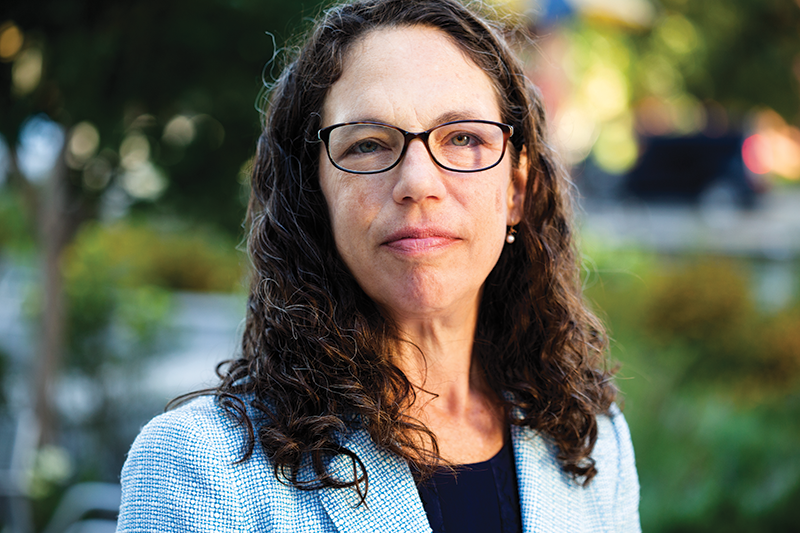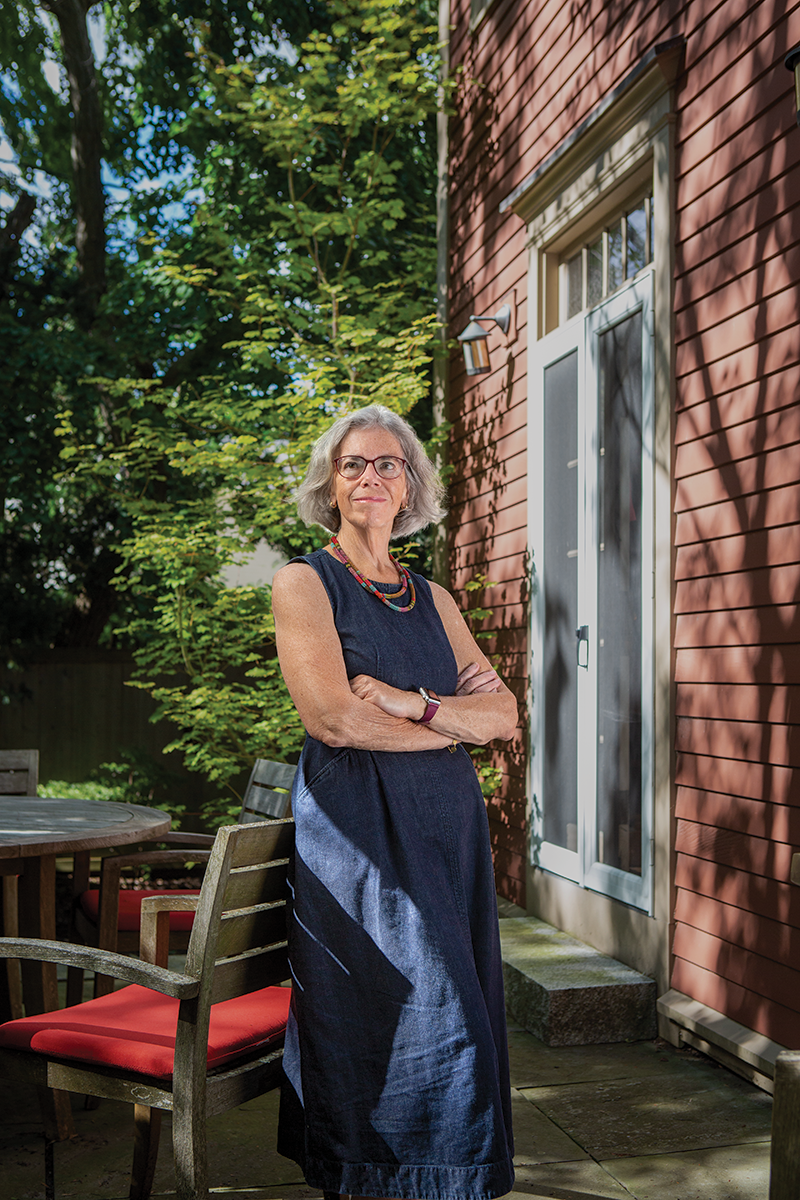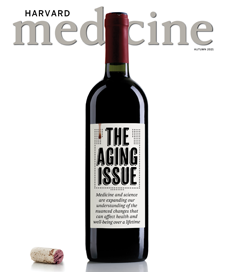Long-term grief often goes undiagnosed even though treatment can be pivotal to overall well-being
11 min read
Some people are fortunate enough to find a life partner they consider their soul mate. Such was the case for Jodi, a patient of M. Katherine Shear, the Marion E. Kenworthy Professor of Psychiatry at the Columbia University School of Social Work. Shear says Jodi and her second husband were close, practically attached at the hip, and they enjoyed each other’s company immensely. When he became chronically and then terminally ill, Jodi stayed by his side, taking him to the hospital on several frightening occasions when it looked like he might have reached the end.
Jodi’s husband repeatedly beat the odds, and with each milestone, he and Jodi would gain more hope that he would be the exception, the one who would not lose out to a deadly condition.
Then, on a rare day when Jodi had stepped away from home, her husband’s heart stopped.
Riddled by guilt and loss, Jodi turned inward, avoiding family, friends, and places she and her husband had frequented. She was captive to her memories, and she sidelined herself from life for nearly four years.
Experiencing grief is natural and necessary, and the vast majority of people suffering the loss of a loved one experience it for a predictable period of time—generally six to twelve months.
But sometimes, people like Jodi become stuck. Their grief remains acute, and they can’t move forward.
They experience what is known as prolonged grief.
Ensnared in despair
When a loved one dies, those left behind naturally feel various levels of sadness, anger, guilt, fear, and loneliness. These are the hallmarks of acute grief.
“It’s a normative response to experience an initial period of loss that is both intense and time-limited,” says Naomi Simon, MD ’92, a professor of psychiatry at the NYU Grossman School of Medicine. “It will change form as time goes on, and it will vary from person to person and culture to culture.”
Eventually, acute grief will slip to the background, integrating the emotions associated with the loss into survivors’ lives. “This is the notion that you have processed the permanence of and adaptations to loss,” says Simon. “The mind, heart, and life have adapted. Grief hasn’t ended, but it has changed.”
Not only were older adults hit hard by COVID-19, many lost the social constructs that would normally ease the grieving process.
For about 7 percent of those who are bereaved, however, grief sticks around in a deeply painful manner, preventing them from moving forward and healing. Prolonged grief—also referred to as complicated grief—traps these individuals in a loop of despair from which they can’t escape.
“The mind, heart, and life have adapted. Grief hasn’t ended, but it has changed.”
Determining when grief becomes pathologic depends on whose guidelines are being followed. In 2015, the WHO issued a new guide on the management of mental health conditions in humanitarian emergencies, saying that grief lasting beyond six months should be considered prolonged grief disorder and specialists should be consulted when determining treatment. In 2018, the American Psychiatric Association, in the fifth edition update of the Diagnostic and Statistical Manual of Mental Disorders (DSM-5), added the disorder, describing it as grief that persists for one year or more.
Mired and bereft
“Prolonged grief generally presents with an inability to adapt to the loss,” Simon says. “You wake up and feel like your loss is brand new, over and over again.”

In 2011, Simon and Shear, who also is the founder and director of the Center for Complicated Grief at Columbia University, co-authored a paper in Depression Anxiety on the condition and related bereavement issues. It explained that “grief can be complicated, much as wound-healing can be complicated,” with the intensity and duration of symptoms heightened and prolonged.
Typical thoughts that prolonged grief sufferers experience, they wrote, include second-guessing, grief-judging, and catastrophizing the future. Behaviors include excessive avoidance, social withdrawal, substance use, and negative health behaviors.
“The patients sometimes carry a lot of self-blame and have a tendency to repeat what-if scenarios, imagining alternative scenarios in which their loved one didn’t die,” says Shear. “This is all natural and even helpful early on, but eventually they must be able to set those feelings aside or figure out how to resolve them.”
While there aren’t rigid rules as to who is more likely to experience such grief, Shear says that, in general, people who lose an identifying relationship—a parent, a child, a spouse—are more susceptible to the condition. If the separation was traumatic, such as a suicide or tragic accident, grief can be especially difficult. Women tend to seek treatment more often than men. “In clinical settings, over 80 percent of complicated grief patients are women,” says Shear. “The reason may be related to differences in the place of relationships in women’s lives.”
In older adults, prolonged grief can affect as many as a quarter of those suffering a loss, according to a 2011 study, while a 2014 study in JAMA Psychiatry stated that about 9 percent of bereaved older women, defined as women over the age of 65, experience prolonged grief. Relationship to the deceased, in particular if it was a child or a spouse, was more predictive of the condition.
“With COVID, bedside goodbyes and social support were off the table. If you can’t process the permanence of the loss, it is difficult to move forward.”
After this pandemic, rates of prolonged grief among older adults may move even higher, says Simon, but given the DSM-5’s requirement that grief persist for twelve months following a loss, not enough time has elapsed for data to be assessed.
Yet, caregivers like Simon are preparing. A June 2020 letter in Psychiatry Research issued an early warning that increased rates of prolonged grief may be expected “considering the circumstances of many COVID-19 deaths [in which]… symptoms [of prolonged grief] are typically elevated when deaths are unexpected, traditional grief rituals (e.g., saying goodbye, viewing, and burial of the body) are absent, and physical social support is lacking.”
Not only were older adults hit hard by COVID-19, many lost the social constructs that would normally ease the process of grieving. “So much has developed over the centuries to help us grieve—comforting rituals and support after death, for instance,” Simon adds. “But with COVID, bedside goodbyes and social support were off the table. If you can’t process the permanence of the loss, it is difficult to move forward.”
Regardless of who experiences it, prolonged grief comes with increased health risks. In Shear’s work, suicidality, heart trouble, cancer, and other physical ailments often accompany the condition’s emotional effects.
A path to understanding
In spite of its debilitating consequences, prolonged grief is often an overlooked diagnosis. One of the first researchers to identify it as a distinct condition was sociologist Holly Prigerson during her postdoctoral career in the mid-1990s at what was then the Western Psychiatric Institute and Clinic at the University of Pittsburgh School of Medicine.
“She noticed bereaved elderly adults who weren’t responding to treatment for depression,” says Shear. “Her statistics showed that grief symptoms loaded differently than those of depression. She came to me for treatment ideas.”
Shear and Prigerson worked together to study this emerging syndrome, going into communities to talk with hospice and grief counselors. They layered in attachment theory research, too, which helps identify how strong the bonds are between the deceased and loved one.
Family members or other loved ones can also be the catalyst for seeking treatment.
To improve how prolonged grief was identified and diagnosed, Prigerson and her colleagues established a 19-item inventory for screening patients. The inventory comprises a series of statements about grief-related thoughts and behaviors, such as “frequent intense feelings of anger or bitterness,” “belief that life is empty, meaningless, or unbearable because this person has died,” and “intense yearning or overwhelming desire to be with the person again.” Patients select one of five responses that range from “never” to “always.” When patients score above a certain threshold, they are considered to be at high risk for the condition and to require clinical care.
Yet, before a physician can screen a patient, the patient must seek, or be guided to, help.
“Many of our patients actually self-identify,” says Shear. “We have two-minute radio ads that people hear and recognize themselves.” Patients also are referred to Shear’s program by their primary care provider, a psychologist or psychiatrist, or a member of the clergy.
Family members or other loved ones can also be the catalyst for seeking treatment. “We see cases where family or friends tell the patient that they can’t continue to support the patient’s behavior, and that it’s harming their relationship,” Shear says.
Relearning happiness
Shear and others have determined that patients experiencing prolonged grief generally do not respond to the types of treatments traditionally used to address depression and PTSD, and they have worked to establish a separate protocol for treating the condition. “The good news is that complicated grief patients have an immense capacity to heal and pull through,” Shear says.
Simon agrees. “It’s not a quick process, but it also won’t require a decade of psychotherapy,” she says.
Shear’s group developed a 16-week treatment protocol and tested it in three different National Institutes of Health-funded randomized controlled trials. The results were promising; on average, 70 percent of patients found relief from their grief.

In general, their treatment protocol focuses on helping people accept the reality of the loss and restore their capacity for well-being. This is achieved by working in seven main areas: accepting grief, managing emotions, envisioning a positive future, strengthening relationships, narrating the story of the death, living with reminders, and connecting with memories. Patients have weekly meetings with a trained therapist and are given activities to complete between sessions. There also are targeted procedures in each area, such as working on a long-term goal, inviting a family member or a friend to a session, or visiting places that hold grief-triggering reminders of their loss.
“These are healing milestones that mark progress,” says Shear.
The comfort of condolences
Despite the fact that prolonged grief is getting more recognition these days, there remains an overall lack of awareness of it in the medical community. Part of the problem, says Susan Block, an HMS professor of psychiatry and medicine and a member of the Department of Psychosocial Oncology and the Palliative Care Department at Dana-Farber Cancer Institute, is that grief is an issue that receives virtually no attention in medical school. “Grief is often considered outside the scope of practice by most physicians,” she says.
“The loss of the relationship with the physician may compound the family’s grief.”
Even medical students who receive some training in hospice and palliative care and are exposed to end-of-life issues have little exposure to grief, says Block.
“Some students may hear about bereavement when they encounter a patient who dies, but prolonged grief isn’t understood or treated as a separate entity,” she says. “And while some physicians make a phone call, write a note, or attend a memorial service, there is rarely further contact after the death. The loss of the relationship with the physician may compound the family’s grief.”
We do not have a system or a set of routine practices for caring for the bereaved, adds Block. This makes identifying a case of prolonged grief much less likely. “There should be a handoff from the deceased patient’s doctor to the survivor’s primary care doctor, but that really doesn’t happen,” says Block. “We need to consider this more at the systems level.”
Simon would agree. “Ideally we would teach primary care physicians to check in about illness, mood, substance use, and basic functioning after a patient has lost a loved one,” she says.
At Dana-Farber, where upwards of 2,500 patients die each year, the institution has taken steps to send a letter of sympathy to a member of each deceased patient’s family and has provided physicians with training on how to write such letters to survivors. “It’s the only system-wide effort I know of,” adds Block. “Hospices do a good job of following up with families after a death and serve as a model for everyone else.”
Many physicians are grateful for guidance on how to construct such letters, says Block. “People, including doctors, often worry about saying the wrong thing to a bereaved person, or they aren’t aware of how incredibly powerful it can be to receive such a letter. I think that there is a growing recognition of the importance of this practice.”
This may be especially true now. “The pandemic has at least brought grief, including prolonged grief, into a space of better awareness,” Block says, “but bereavement care in general has been inadequate throughout the pandemic because the health care system has been overwhelmed.”
Light
For Jodi, time and professional help made a difference. She began to emerge from her cloud of grief after visiting an anxiety clinic where a practitioner diagnosed her state of prolonged grief and referred her to Shear’s structured program. Jodi made a full recovery and, in doing so, got her life back.
Amanda Loudin is a writer based in Maryland.
Images: K Mitch Hodge (top); Flynn Larsen (Simon); John Soares (Block)
